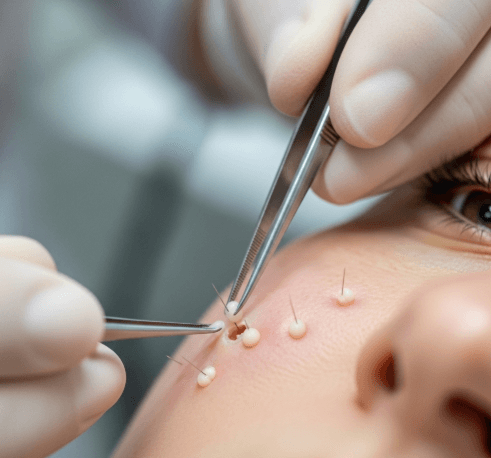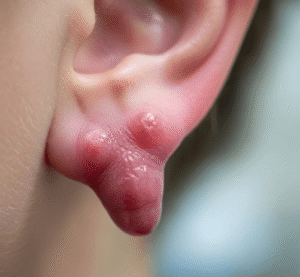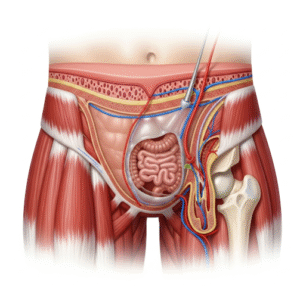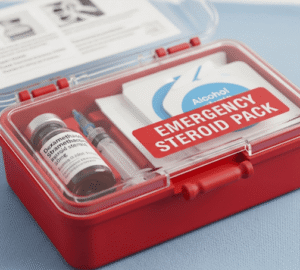Milia Extraction in Korea is a popular dermatological and aesthetic treatment aimed at safely removing small, white keratin-filled cysts that often appear on the face, especially around the eyes, nose, and cheeks. Milia are harmless but stubborn, and they do not resolve easily with typical skincare products. Because they resemble tiny whiteheads yet cannot be squeezed out without proper technique, many people seek professional extraction.
Korean dermatology clinics and skin spas are globally recognized for their gentle, precise, and scar-free approach to milia removal. Treatments often combine manual extraction, laser therapy, and soothing aftercare with K-beauty’s preventive philosophy to ensure the skin remains smooth and healthy.
What It Is
Milia are tiny, hard cysts that form when keratin (a protein in the skin) becomes trapped beneath the surface.
Key characteristics:
- Appearance → Small, white or yellow bumps (1–2 mm).
- Common areas → Around the eyes, nose, cheeks, and forehead.
- Cause → Clogged pores, sun damage, trauma, or use of heavy skincare products.
- Types →
- Primary milia → Appear spontaneously.
- Secondary milia → Develop after skin injury, burns, or long-term sun exposure.
Since milia do not have an opening like pimples, self-extraction attempts can damage the skin. Professional removal in Korea ensures precision and safety.
Why It’s Done
Patients undergo milia extraction in Korea for:
- Cosmetic improvement → Achieve smoother, blemish-free skin.
- Prevention of scarring → Improper at-home squeezing can cause scars or infections.
- Confidence boost → Clearer skin enhances self-esteem.
- Comfort → Large clusters of milia may feel rough or irritating.
- Cultural ideals → In K-beauty standards, spotless, poreless skin is highly valued.
Alternatives
If professional extraction is not chosen, alternatives include:
- Topical retinoids → Promote cell turnover and prevent milia formation.
- Chemical exfoliation → AHAs and BHAs gently dissolve dead skin buildup.
- Laser therapy (CO₂ or Er:YAG) → Vaporize resistant or clustered milia.
- Cryotherapy → Freezing treatment for secondary milia.
- At-home K-beauty care → Double cleansing, exfoliating toners, lightweight moisturizers.
While helpful for prevention, these methods rarely remove existing milia as effectively as extraction.
Preparation
Preparation for milia extraction in Korea includes:
- Consultation → Dermatologist or esthetician confirms diagnosis (to rule out other bumps).
- Pre-care advice → Avoid exfoliants, retinoids, or harsh treatments before the session.
- Skin hydration → Keeping the skin barrier strong ensures faster healing.
- Cleansing routine → Patients arrive with clean skin, free of heavy makeup or oil.
How It’s Done
A milia extraction session in Korea usually lasts 20–40 minutes depending on the number of lesions:
- Cleansing – Skin is gently cleansed and sterilized.
- Softening – Warm steam or hydrating serums are applied to make extraction easier.
- Manual extraction –
- A sterile lancet or needle makes a tiny opening.
- A comedone extractor tool or gentle pressure removes the keratin plug.
- Laser option (if needed) – CO₂ or Er:YAG laser for stubborn or clustered milia.
- Disinfection – Antiseptic applied to prevent infection.
- Soothing care – Cooling masks, LED light therapy, or calming ampoules.
- Final step – Application of lightweight sunscreen if the treated area is exposed.
Recovery
Recovery is quick and minimal:
- Immediately after → Mild redness or small pinpoint marks.
- 1–2 days later → Redness subsides, and treated areas look smoother.
- 1 week later → Skin appears clear and even.
Korean clinics often recommend hydrating sheet masks, centella creams, and sunscreen to support healing.
Complications
Milia extraction is safe when performed professionally, but possible side effects include:
- Temporary redness or swelling.
- Small scabs at extraction points.
- Rare hyperpigmentation if aftercare is neglected.
- Very rare scarring if extraction is too aggressive.
Korean dermatologists minimize risks by using sterile tools, precision techniques, and gentle aftercare.
Treatment Options
Korean clinics offer various programs for milia management:
- Manual extraction facials → Professional removal plus calming skincare.
- Laser-assisted programs → CO₂ or Er:YAG for stubborn or clustered milia.
- Combination treatments → Extraction + Aqua Peel + LED therapy.
- Brightening & pore care → Milia removal plus Vitamin C or niacinamide infusion.
- Monthly maintenance memberships → Prevent recurrence with routine facials and exfoliation.
Seoul clinics, especially in Gangnam, provide affordable single-session or multi-session packages for long-term prevention and maintenance.
Conclusion
Milia Extraction in Korea is one of the most effective and safest ways to achieve clear, smooth, and flawless skin. With professional manual extraction, advanced laser options, and holistic aftercare, Korean dermatologists and skincare experts ensure that milia are removed without scarring or recurrence.
Thanks to Korea’s global leadership in skin aesthetics and K-beauty philosophy, patients benefit not only from immediate results but also from preventive strategies for long-term skin health. For those struggling with stubborn white bumps, milia extraction in Korea provides a trusted and world-class solution.













